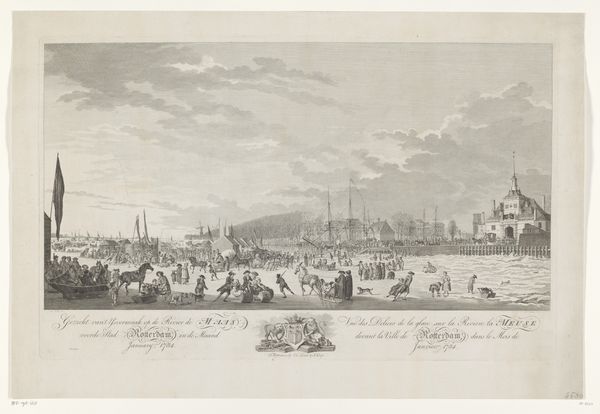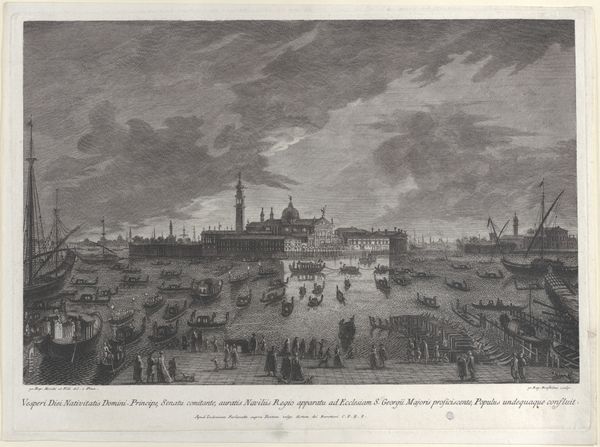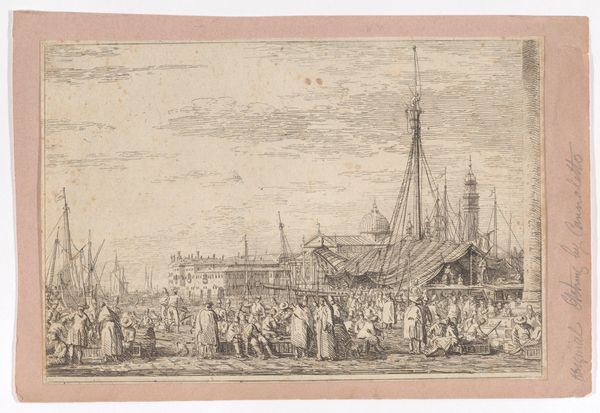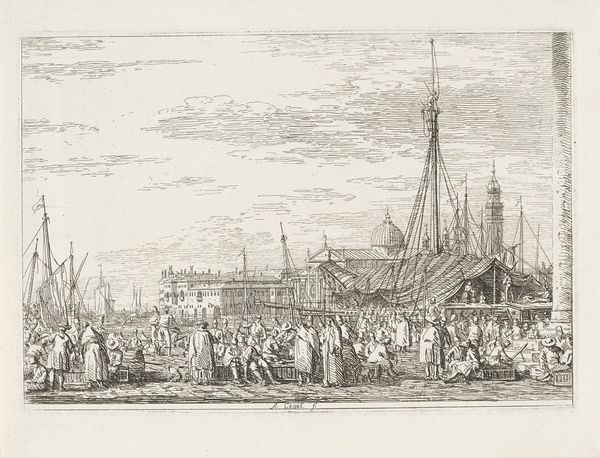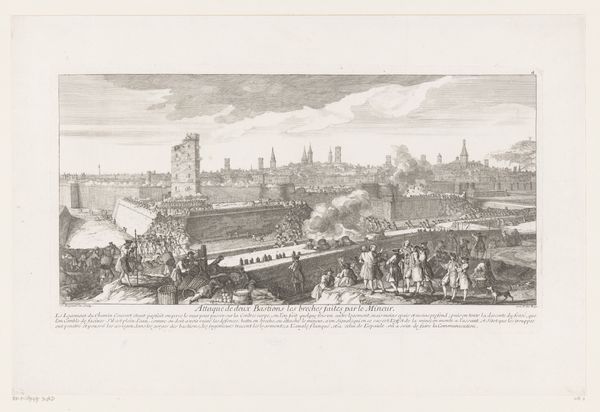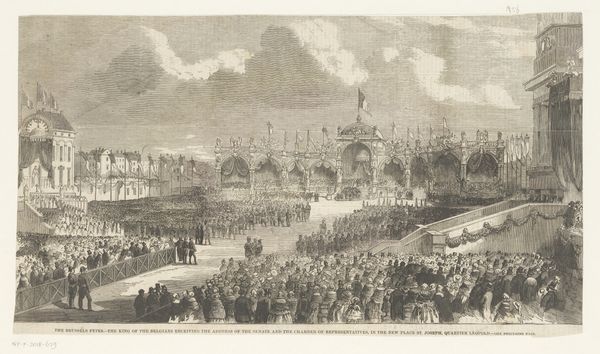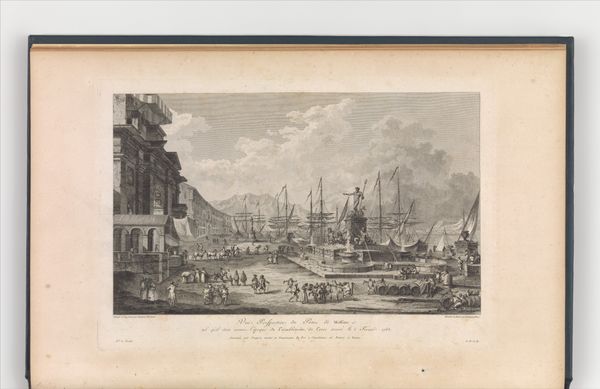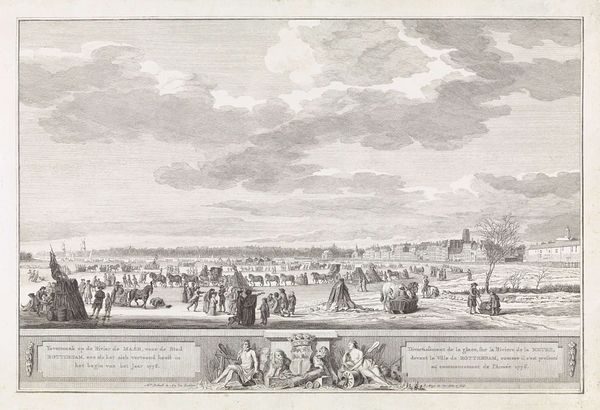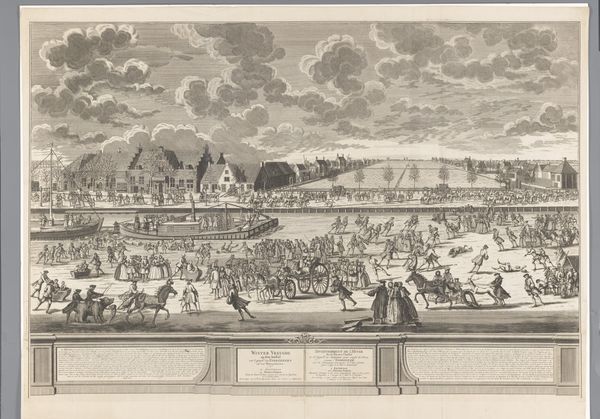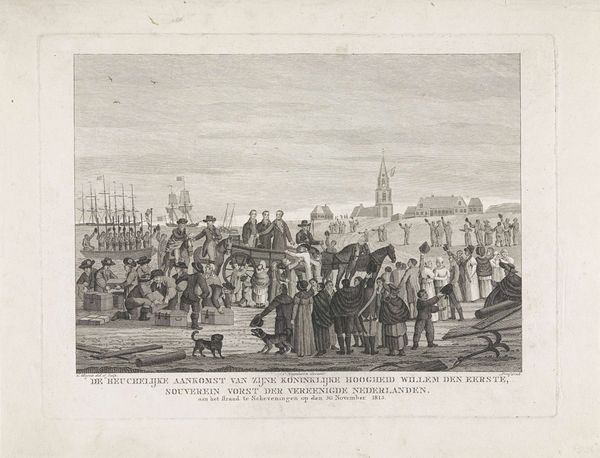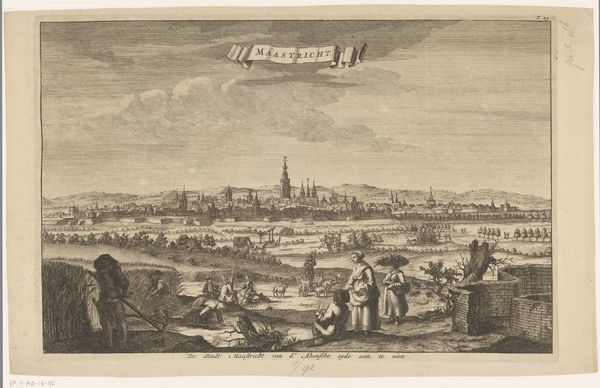
Plate 5: The Doge in the Bucintoro Departing for the Porto di Lido on Ascension Day, from 'Ducal Ceremonies and Festivals' (Le Feste Ducali) 1746 - 1786
0:00
0:00
Dimensions: Plate: 17 3/4 × 22 3/8 in. (45.1 × 56.9 cm) Sheet: 21 3/16 × 27 1/2 in. (53.8 × 69.8 cm)
Copyright: Public Domain
Editor: Here we have Giovanni Battista Brustolon's "Plate 5: The Doge in the Bucintoro Departing for the Porto di Lido on Ascension Day, from 'Ducal Ceremonies and Festivals'", an engraving from the late 18th century. It's bustling with people and boats! What's your read on it? Curator: What strikes me is how this image normalizes state power and spectacle. Venice wasn't simply a city, it was a carefully constructed performance. Look at how the Doge, the head of state, is centered within this golden vessel, the Bucintoro. How does that reinforce hierarchies? Editor: Well, the Bucintoro certainly draws your eye. It's gilded and massive, contrasting with the smaller vessels and emphasizing the Doge's importance. Curator: Exactly! And Ascension Day itself commemorated Venice's maritime dominance. The Doge would literally throw a ring into the sea, symbolizing Venice's marriage to the Adriatic. Consider the political implications – controlling the sea meant controlling trade and power. Editor: So it was propaganda, in a way? A carefully crafted image to project power and legitimacy. Curator: Absolutely. But it also touches upon issues of exclusion. Who is present in this image, and who is conspicuously absent? We should examine such portrayals critically through a postcolonial lens. The wealth on display here was not equally distributed, nor was it ethically acquired. Editor: I see what you mean. The engraving focuses on the elite participating in the ceremony. I hadn't considered what this implies about the social fabric of Venice at that time. Curator: This image provides a powerful insight into the way power was performed and legitimized. Consider what such representations obscure, whose voices are unheard in this dominant narrative. Editor: I never thought about approaching baroque art from this perspective. It’s eye-opening. Curator: Art like this should provoke questions rather than simply awe.
Comments
No comments
Be the first to comment and join the conversation on the ultimate creative platform.
